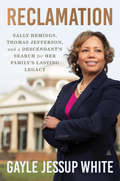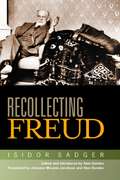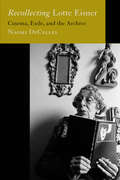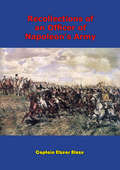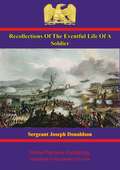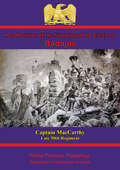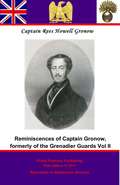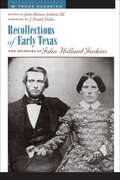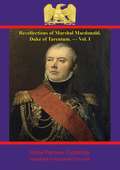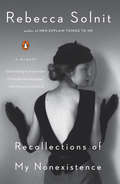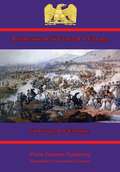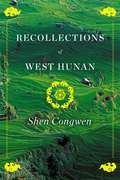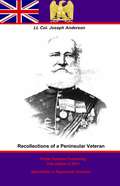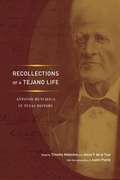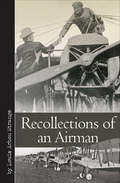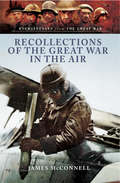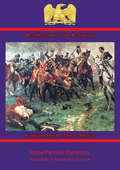- Table View
- List View
Reclaiming: Essays on finding yourself one piece at a time ‘Yewande offers piercing honesty… a must-read book for anyone who has been on social media.’- The Skinny
by Yewande BialaRECLAIMING will cover a wide breadth of topics from the specific microaggressions black women encounter on dating apps to navigating a career that may seem impossible. Every step of Yewande's writing affirms that maintaining your sense of self in a world that is not supportive of you is difficult, but not impossible. The audiobook will be a thought provoking, sensitive, challenging and deeply moving collection of essays covering everything from identity to love and career choices, published in May 2022.RECLAIMING will serve as an inspiring love letter for anyone who has ever felt out of place, but strives to find success in every aspect of their lives.(P) 2022 Hodder & Stoughton Limited
Reclamation: Sally Hemings, Thomas Jefferson, and a Descendant's Search for Her Family's Lasting Legacy
by Gayle Jessup WhiteA Black descendant of Thomas Jefferson and Sally Hemings’ family explores America’s racial reckoning through the prism of her ancestors—both the enslaver and the enslaved. <p><p> Gayle Jessup White had long heard the stories passed down from her father’s family, that they were direct descendants of Thomas Jefferson—lore she firmly believed, though others did not. For four decades the acclaimed journalist and genealogy enthusiast researched her connection to Thomas Jefferson, to confirm its truth once and for all. After she was named a Jefferson Studies Fellow, Jessup White discovered her family lore was correct. Poring through photos and documents and pursuing DNA evidence, she learned that not only was she a descendant of Jefferson on his father’s side; she was also the great-great-great-granddaughter of Peter Hemings, Sally Hemings’s brother. <p><p> In Reclamation she chronicles her remarkable journey to definitively understand her heritage and reclaim it, and offers a compelling portrait of what it means to be a black woman in America, to pursue the American dream, to reconcile the legacy of racism, and to ensure the nation lives up to the ideals advocated by her legendary ancestor.
Recollecting Freud
by Isidor SadgerAvailable here for the first time in English, this eyewitness account by one of Freuds earliest students has been rediscovered for twenty-first century readers. Isidor Sadgers recollections provide a unique window into the early days of the psychoanalytic movement the internecine and ideological conflicts of Freuds disciples. They also illuminate Freuds own struggles: his delight in wit, his attitudes toward Judaism, and his strong opinions concerning lay, non-medical analysts. As a student, Sadger attended Freuds lectures from 1895 through 1904. Two years later Freud nominated Sadger to his Wednesday Psychological Society (later called the Viennese Psychoanalytic Society). Sadger, however, was not part of Freuds inner circle, but more a participant observer of the early years of the psychoanalytic movement and of Freud as teacher, therapist, and clinician. Sadger was considered one of the most devoted followers of Freud and hoped to become one of Freuds "favorite sons. " At the First Psychoanalytic Congress held in Salzburg in 1908, Sadger was chosen to be one of the principal speakers along with Freud, Jones, Alder, Jung, Prince, Rifkin, Abraham, and Stekel, an honor that bespeaks Sadgers early role in the movement. But Freud and many of his disciples were also openly critical of Sadgers work, calling it at various times overly simplistic, unimaginative, reductionist, orthodox, and rigid. In 1930 Sadger published his memoir, Sigmund Freud: Persönliche Erinnerungen. With the rise of Nazism and World War II, the book became lost to the world of psychoanalytic history. Recently, Alan Dundes learned of its existence and mounted a search that led him around the world to one of the few extant copies in a research library in Japan. The result of his fascinating quest is Recollecting Freud, a long-lost personal account that provides invaluable insights into Freud and his social, cultural, and intellectual context.
Recollecting Lotte Eisner: Cinema, Exile, and the Archive (Feminist Media Histories #3)
by Naomi DeCellesRecollecting Lotte Eisner provides the first in-depth examination of the remarkable transnational career of film journalist, archivist, and historian Lotte Eisner (1896–1983). From her early years as a film critic in interwar Berlin to her escape from prison in occupied France and from her role as chief curator at the Cinémathèque française to that as the mythic "collective conscience" of New German Cinema, Eisner was a prolific writer and lecturer and a pivotal voice in early film and media studies. Situated at the juncture of feminist media historiography and disciplinary intellectual history, this groundbreaking book is based on extensive multilingual archival research and the excavation of a rich corpus of previously overlooked materials. Introducing samples of Eisner's writing in translation, this volume makes some of the most important contributions of a foundational scholar in the field of film studies accessible for the first time to an English-language readership.
Recollections (NIU Series in Slavic, East European, and Eurasian Studies)
by Ivan BuninIn this edited translation of famed writer Ivan Bunin's Recollections translator Thomas Gaiton Marullo provides an intimate look at leading political, social, cultural, and literary figures from late imperial Russia, through the First World War and the revolutions of 1905 and 1917 to the birth of the Russian diaspora and the rise of the Soviet state. Through engaging, colorful, and often idiosyncratic vignettes, Bunin (1870–1953) details his admiration for Leo Tolstoy, Anton Chekhov, Sergei Rachmaninov, and Fyodor Chaliapin. He shares his love-hate relationships with Maxim Gorky, Alexei Tolstoy, and Alexander Kuprin. In addition, Marullo's translation reveals Bunin's hatred of avant-gardists, particularly Vladimir Mayakovsky, as well as his thoughts and experiences on war, revolution, and exile. Bunin's work led, in the end, to his bittersweet reception of the Nobel Prize in Literature (1933) in Stockholm, making him the first Russian and the first writer in exile ever to receive this award. Recollections reveals the author's feelings toward this unprecedented event. Bunin's Recollections stands not only as a stark summa of his passage through literature and life but also as an equally bold apologia as to his place in both.
Recollections Of An Officer Of Napoleon’s Army
by Captain Elzéar Blaze E Jules MérasMany memoirs of the Napoleonic period are recounting, more or less interesting dependant on the author, of the events of their service interspersed by anecdotes of interesting events, Elzéar Blaze eschewed that style of reminiscence and left a singular view of his time in the Grande Armée. His memoirs are highly stylised, divided into the 'themes' of military life, and eruditely written by an educated man of the era, who combined wit with an eye for an anecdote. He covers the different aspects of his military career with amusing stories and vivid recollections of the men with which he served, a number of the generals who commanded them, and the enemies that they were fought and were billeted on if they were in occupation; he covers the school of the Vélites, his military training, the marches, camp-life, bivouacs, active campaigning, and the battles fought under Napoleon. Blaze, like his brother, sought out a military life under the eagles of Napoleon, he enlisting in the Vélites of the Imperial Guard, his brother into the medical services of the army. The Vélites were founded as part of Napoleon's further, ultimately unsuccessful, attempts to sway the aristocracy to fall in line and support his rule. The military tutelage in the Vélites was to be supported by private means, which translated into their ranks being filled with the scions of the nobility and wealthy bourgeoisie. Blaze fought as part of Napoleon's invincibles from 1807 until the end of the empire, but continued his service under the returned Bourbons and retired as captain in 1828.An interesting and different view of the Grande Armée.
Recollections Of The Eventful Life Of A Soldier: By The Late Joseph Donaldson, Sergeant In The Ninety-Fourth Scots Brigade
by Sergeant Joseph DonaldsonDonaldson "was born in Glasgow, where his father was employed by a mercantile house. With some school companions he ran away to sea and made a voyage to the West Indies, which disenchanted him of a sea life, and he returned home and was sent back to school by his father. Early in 1809 he again ran away, and without communicating with his friends enlisted in the old 94th (Scotch, or Scots, brigade). He accompanied the regiment to Jersey, then to Spain, where it took part in the desperate defence of Fort Matagorda during the siege of Cadiz, and afterwards was with Picton's division in the principal battles and sieges in the Peninsula from 1811 to 1814" (Oxford DNB). He "was an intelligent man, and possessed a wider set of interests than was common in the ranks, so that it is always worthwhile to look up his notes and observations. His description of the horrors of Masséna's retreat from Portugal in 1811 is a very striking piece of lurid writing . . . The Eventful Life of a Soldier is well worth reading" (Oman, Wellington's army p. 30).Author -- Sergeant Joseph Donaldson (1793-1830)Text taken, whole and complete, from the edition published in Philadelphia, G. B. Zieber & co., 1845.Original Page Count - vii, and 231 p.Illustrations -- 9 maps and plans.
Recollections Of The Storming Of The Castle Of Badajos
by Captain James MaccarthyThe situation for the Duke of Wellington and his British and Portuguese troops in 1812 was somewhat perilous. Although they had chased Masséna and his French Legions from Spain, overwhelming numbers of enemy troops were still in Spain despite being scattered through the provinces. For Wellington to move forward and take the fight to the enemy, he would have to take the two border fortresses of Ciudad Rodrigo and Badajos, and do so quickly before the bickering French marshals united against him. After capturing Ciudad Rodrigo in a bloody but short siege, the Iron Duke turned his attention on the much more formidable fortress of Badajos, a fortress that they had failed to take before.The few trained Allied engineers were bolstered by volunteer officers like the author Captain MacCarthy, who undertook the dangerous work of the engineers. However, a lack of artillery and shot meant that the task would be exceptionally difficult, and pressed by time Wellington orders an early assault by the best of his infantry over barely practicable breeches. As a diversion, he also orders an attempt to capture the castle of Badajos by escalade - the author himself being part of this diversionary effort. In the event, the breeches prove to be impregnable and after repeated murderous attempts, the defences of Badajos are only breached by the ladder borne assault on the castle.Captain MacCarthy's short narrative is vividly written filled with the blood and shot of the siege and the castle's final capture.
Recollections and Anecdotes; being a second series of Reminiscences of the Camp, the Court, and the Clubs. (Reminiscences of Captain Gronow, formerly of the Grenadier Guards #2)
by Captain Rees Howell GronowThis ebook is purpose built and is proof-read and re-type set from the original to provide an outstanding experience of reflowing text for an ebook reader. Captain Gronow, joined the Grenadier guards as a young subaltern in 1812, having completed his studies at Eton and was widely know in England and the Continent thereafter as a raconteur and a fine pistol shot. His "Reminiscences" span four volumes in their original edition, an edited version was produced around the turn of the 19th century, having varied titles but following a stream of collected anecdotes set in distinct eras. These memoirs have achieved a high degree of fame and are justly accorded much historical respect, especially in those incidents where Gronow was personally present to record the words and deeds of those around him. Although admitted to the highest society, Gronow is far from being a snob and his works bear the stamp of a high degree of moral probity, they could not be described as the handiwork of a gossip. In this the second volume, there is a more diverse range in the anecdotes, rather than focussing in on a particular period of his life, Gronow's work is roughly divided into two parts; the first is more of eye-witness account the 1815 campaign and particularly the battle of Waterloo. He is critical of what has been published by some of the French historians who wrote somewhat biased views, and indeed what was reported as Napoleon's view of the battle. The second part focuses on the Court and the Clubs, with further tales of famous figures of the era, their vices and their stories. The great and the good of the period appear in thumb sketches and anecdotes; men such as The Duke of Wellington, Napoleon's family including Madame Mére, Hortense, Jérome et al, Beau Brumell, The Prince Regent, General Ornano, Lord Byron, Shelley, the Duke of York, Alexandre Dumas, Balzac all feature. "Reading Gronow is like drinking champagne - effervescent and mildly addictive" Author - Captain Rees Howell Gronow - (1794-1865) Text taken, whole and complete, from the edition published in 1865, London, Smith, Elder and Company. Original - 228 pages. Linked TOC
Recollections and Letters of General Lee
by Robert E. LeeBiography of the famous general by his son
Recollections and Letters of General Robert E. Lee
by Robert E. LeeGeneral Robert E. Lee was the most heroic figure of the Civil War, but to many, he is a solitary figure. This book fleshes out the man and reveals the workings of a great military mind and a warm, understanding, and generous human being. It shows all the facets of the general during the war; at the conclusion, when he was an outspoken proponent of a reasonable peace which would allow the South to rejoin the Union; and after the war, when he served as president of Washington College, and became a driving force for the creation of a viable educational system. This anthology shows all these facets of the general, through his correspondence and through the revealing insight supplied by his son. No other collection of source materials gives such a whole and rewarding picture of one of the South's greatest sons and heroes.
Recollections of Early Texas: Memoirs of John Holland Jenkins (Personal Narratives of the West)
by John Holland Jenkins&“[A] firsthand account by one who measured up to the demands of danger and hardships and lived to write about it . . . Invaluable . . . Well documented.&” —Library Journal As a teenager in the 1950s, John Holmes Jenkins set to work on collecting and editing his great-great-grandfather&’s writings about his experiences on the Texas frontier. John Holland Jenkins joined General Sam Houston&’s army at age thirteen after losing his stepfather at the Alamo. In addition to fighting the Mexicans, he faced peril from Indian warriors as well as the everyday difficulties of pioneer life. His reports on the events of the time were included in newspapers with very small readerships—and, his descendant would discover, were sometimes used word-for-word in respected history textbooks without any credit given to the source. This volume includes these memoirs of the Texas Republic and early statehood, along with illustrations, notes, biographical sketches, a bibliography, and an index. &“Fascinating . . . A commendable job.&” —The New York Times &“[These reminiscences] light up for whoever will read the earliest days of early English-speaking Texas.&” —J. Frank Dobie, from the foreword
Recollections of Marshal Macdonald, Duke of Tarentum. — Vol. I (Recollections of Marshal Macdonald, Duke of Tarentum #1)
by Camile Rousset Marshal Etienne-Jacques-Joseph-Alexandre Macdonald, Duc de Tarente Stephen Louis SimeonThe dignity of Marshal of France was to be the apogee of success for any general in Napoleonic France, since the Emperor only created 26 during his years on the throne. Fame, riches and high station in the Imperial Court were the bountiful reward for hard service on the battlefield. Napoleon handed out these dignities, along with kingdoms, principalities, admiralties, dukedoms for more than purposes of recognition; they were also to bind the recipient to his empire even more tightly. Marshal Macdonald was not a man to be flattered or bought; he was of Scottish descent and held his own views. His memoirs bear this imprint of forthright opinion, which had led him into trouble with the Emperor, but such was his value on the battlefield he was courted again by Napoleon.Marshal Macdonald fought all across Europe, particularly at the battle of Jemappes in the Revolutionary armies on the Rhine. He fought well under Napoleon's eagles in Spain, Russia, Germany and France itself. Outstanding at the battle of Wagram, his attack on the Austrian centre, for which he became the only man to be made marshal on the field of battle by Napoleon, clinched the day. Never wholly Napoleon's man, he was a prime mover in forcing his master's abdication in 1814 and refused to rejoin him in 1815.This first volume Marshal Macdonald recounts his life up to and including the battle of Wagram in 1809. Author - Marshal Macdonald, Etienne-Jacques-Joseph-Alexandre, Duc de Tarente, 1765-1840.Editor - Rousset, Camille, 1821-1892.Translator - Simeon, Stephen Louis, 1857-1937Text taken, whole and complete, from the edition published in 1892, London, by Richard Bentley and Son.Original Page Count - 355 pages.
Recollections of Marshal Macdonald, Duke of Tarentum. — Vol. II (Recollections of Marshal Macdonald, Duke of Tarentum #2)
by Camile Rousset Marshal Etienne-Jacques-Joseph-Alexandre Macdonald, Duc de Tarente Stephen Louis SimeonThe dignity of Marshal of France was to be the apogee of success for any general in Napoleonic France, since the Emperor only created 26 during his years on the throne. Fame, riches and high station in the Imperial Court were the bountiful reward for hard service on the battlefield. Napoleon handed out these dignities, along with kingdoms, principalities, admiralties, dukedoms for more than purposes of recognition; they were also to bind the recipient to his empire even more tightly. Marshal Macdonald was not a man to be flattered or bought; he was of Scottish descent and held his own views. His memoirs bear this imprint of forthright opinion, which had led him into trouble with the Emperor, but such was his value on the battlefield he was courted again by Napoleon.Marshal Macdonald fought all across Europe, particularly at the battle of Jemappes in the Revolutionary armies on the Rhine. He fought well under Napoleon's eagles in Spain, Russia, Germany and France itself. Outstanding at the battle of Wagram, his attack on the Austrian centre, for which he became the only man to be made marshal on the field of battle by Napoleon, clinched the day. Never wholly Napoleon's man, he was a prime mover in forcing his master's abdication in 1814 and refused to rejoin him in 1815.This second volume Marshal Macdonald recounts his experiences up to the fall of Napoleon in 1815. Title - Recollections of Marshal Macdonald, Duke of Tarentum. -- Vol. IISeries Name - Recollections of Marshal Macdonald, Duke of Tarentum.Series Number --2Author - Marshal Macdonald, Etienne-Jacques-Joseph-Alexandre, Duc de Tarente, 1765-1840.Editor - Rousset, Camille, 1821-1892.Translator - Simeon, Stephen Louis, 1857-1937Text taken, whole and complete, from the edition published in 1892, London, by Richard Bentley and Son.Original Page Count - 328 pages.
Recollections of My Nonexistence: A Memoir
by Rebecca Solnit"An un-self-centered book . . . At the same time that [Solnit] describes her forays into her past, she invites us to connect pieces of her story to our own, as a measure of how far we've come and how far we have left to go." --Jenny Odell, The New York Times Book Review An electric portrait of the artist as a young woman that asks how a writer finds her voice in a society that prefers women to be silentIn Recollections of My Nonexistence, Rebecca Solnit describes her formation as a writer and as a feminist in 1980s San Francisco, in an atmosphere of gender violence on the street and throughout society and the exclusion of women from cultural arenas. She tells of being poor, hopeful, and adrift in the city that became her great teacher, and of the small apartment that, when she was nineteen, became the home in which she transformed herself. She explores the forces that liberated her as a person and as a writer--books themselves; the gay community that presented a new model of what else gender, family, and joy could mean; and her eventual arrival in the spacious landscapes and overlooked conflicts of the American West. Beyond being a memoir, Solnit's book is also a passionate argument: that women are not just impacted by personal experience, but by membership in a society where violence against women pervades. Looking back, she describes how she came to recognize that her own experiences of harassment and menace were inseparable from the systemic problem of who has a voice, or rather who is heard and respected and who is silenced--and how she was galvanized to use her own voice for change.
Recollections of Sir George B. L’Estrange
by Sir George B. L’estrangeThis ebook is purpose built and is proof-read and re-type set from the original to provide an outstanding experience of reflowing text for an ebook reader. Sir George L'Estrange was only an ensign when he started on his Peninsular career in the 31st or Huntingdonshire Regiment of Foot, joining the war in 1812. Arriving in Portugal and meeting with his cousin, who had escaped from French capture at Verdun, Sir George recounts his cousin's story before returning to his own narrative and his first major engagement at the battle of Vittoria in 1813. His experiences of the fighting after Vittoria until the end of the war make up the majority of the book: encompassing snow-bound bivouacs in the Pyrenees; hard fighting at Orthez; and his trials at the forefront of the fighting. The finale details various anecdotes that he must have heard from brother officers whilst on duty in Spain and Portugal. A solid memoir with much to recommend it to the reader. Title - Recollections of Sir George B. L'Estrange Sub-Title - Late of the 31st Regiment, and Afterwards of the Scots Fusilier Guards Author -- Sir George B. L'Estrange (1796-1878) Text taken, whole and complete, from the edition published in 1874, London, by Marston, Low, & Searle. Original - viii and 280 pages. Illustrations - one portrait and 8 illustrations.
Recollections of Virginia Woolf by Her Contemporaries
by Joan Russell NobleA landmark study of Virginia Woolf, now back in printRecollections, anecdotes and first-hand impressions--including pieces from some of the leading lights of the Bloomsbury Group--are gathered together in this perceptive and profound volume. Many pieces were specially written for the original edition of this book, including work by Duncan Grant, Rebecca West, and T.S. Eliot, while perhaps its most famous piece--by a member of her household staff--movingly describes her on the day of her death. From all these reminiscences, a composite and complex portrait of the artist emerges, one that no fan of her writings should be without.
Recollections of West Hunan
by Shen CongwenRecollections of Western Hunan is a collection of the letters and essays of Chinese novelist Shen Congwen. Describing his childhood and life in Western Hunan between 1902 and 1937, this collection paints a vivid picture of both the idyllic beauty and turmoil of life in a province once known as the "bandit area," a countryside shrouded in mystery, mysticism, and chaos.
Recollections of a Peninsular Veteran
by Pickle Partners Publishing Captain Acland Anderson Lt.-Colonel Joseph Anderson C.B. K.H.This ebook is purpose built and is proof-read and re-type set from the original to provide an outstanding experience of reflowing text for an ebook reader. Lt. Col, Anderson wrote his memoirs as for his own family not suspecting their interest to the larger reading public. As such they hold a charm of their own apart from a number of the more swashbuckling accounts of soldier's adventures in the British army during the Napoleonic and Victorian periods. That is not to say that they are staid in any way but written from a more modest view-point than some. Joining the British army at the tender age of fifteen as an ensign in the 78th Regiment of Foot, he took part on the clash at Maida in which an out-numbered British force decisively defeated the French division of General Reynier. Posted to the main Peninsular theatre of war, he took part on the battles of Talavera, Busaco and Fuentes d'Oñoro. A humane and reasonable man capable of great bravery, such as going into French lines to recover the body of his dead friend, Anderson's memoirs have deserved a greater audience than the circle of his family and were duly published after his death. Text taken, whole and complete, from the 1913 edition published in London by Edward Arnold, Original 330 pages. Author - Lt.-Col Joseph Anderson C.B. K.H. 01/06/1790 - ??/01/1877 Foreword - Captain Acland Anderson ????-????
Recollections of a Picture Dealer
by Ambroise VollardCelebrity, art merchant, socialite, publisher, and writer, Ambroise Vollard (1867-1939) was one of the most extraordinary figures in 20th-century art. He possessed an uncanny ability to recognize genius in painters -- dozens of important artists received valuable commissions and gallery space with his help, and his galleries presented the first one-man shows for such luminaries as Matisse, Cézanne, and Picasso. Vollard's warmth, candor, and intelligence earned him the friendship of a generation of artists and make this memoir an enthralling and often hilarious account of an exciting Golden Age of painting.Vollard's anecdotal recollections transport the reader to Paris at the turn of the 20th century and the legendary "Street of Pictures," the rue Laffitte, where Vollard lived and worked. Rather than critiquing artists or esthetic movements, Vollard focuses on the human sidelights that made his life as picture dealer so rich and fascinating: his early efforts to sell the works of Cézanne, despite incredible opposition to Impressionism; his dinner parties, whose guests included Renoir, Forain, Degas, Redon, and Rodin; his many portrait sittings for Cézanne, Renoir, Rouault, Bonnard, Forain, and Picasso; his observation on the studios, habits, and personalities of Manet, Matisse, Picasso, de Groux, Signac, and Rousseau; and his encounters with Gertrude Stein, Alfred Jarry, Guillaume Apollinaire, Mallarmé, and Zola.
Recollections of a Tejano Life: Antonio Menchaca in Texas History
by Jesús F. de la Teja Timothy MatovinaSan Antonio native, military veteran, merchant, and mayor pro tem José Antonio Menchaca (1800–1879) was one of only a few Tejano leaders to leave behind an extensive manuscript of recollections. Portions of the document were published in 1907, followed by a “corrected” edition in 1937, but the complete work could not be published without painstaking reconstruction. At last available in its entirety, Menchaca’s book of reminiscences captures the social life, people, and events that shaped the history of Texas’s tumultuous transformation during his lifetime. Highlighting not only Menchaca’s acclaimed military service but also his vigorous defense of Tejanos’ rights, dignity, and heritage, Recollections of a Tejano Life charts a remarkable legacy while incorporating scholarly commentary to separate fact from fiction. Revealing how Tejanos perceived themselves and the revolutionary events that defined them, this wonderfully edited volume presents Menchaca’s remembrances of such diverse figures as Antonio López de Santa Anna, Jim Bowie, Davy Crockett, Sam Houston, General Adrián Woll, Comanche chief “Casamiro,” and Texas Ranger Jack Hays. Menchaca and his fellow Tejanos were actively engaged in local struggles as Mexico won her independence from Spain; later many joined the fight to establish the Republic of Texas, only to see it annexed to the United States nine years after the Battle of San Jacinto. This first-person account corrects important misconceptions and brings previously unspoken truths vividly to life.
Recollections of an Airman (Vintage Aviation Library)
by Louis Arbon StrangeThis candid WWI memoir takes readers inside the cockpit with an RAF officer on the Western Front from the outbreak the Great War until its end in 1918. Louis Arbon Strange was at the Royal Air Force&’s Central Flying School when war broke out in 1914. He immediately reported to Royal Flying Corps headquarters and joined No. 5 Squadron. Strange remained on active duty throughout the war, serving his country over the Western Front from August of that year until the enemy&’s surrender. Strange transferred to No. 6 Squadron in 1915 and went on to form and command No. 23 Squadron. Due to illness, he did not accompany his squadron to France, but spent that time training others. He took charge of the Machine-Gun School at Hythe and other schools of aerial gunnery before returning to the Front. There he commanded the 23rd Wing and finally took command of the 80th Wing from June 1918 until the end of the war. As Strange chronicles his experiences, he provides unique insight into how and why the Allied airmen eventually prevailed.
Recollections of the Great War in the Air: Recollections Of The Great War In The Air (Eyewitnesses from The Great War)
by James McConnell&“The memoir of . . . an American pilot flying with the famous French Flying Corps&’ American Layfayette Escadrille and provides a unique personal insight.&”—Firetrench In 1915 James Roger McConnell enlisted as a US volunteer in the French Flying Corps. He was part of a remarkable band of American volunteers which were formed into the famous Lafayette Escadrille, which was then based at Verdun. This book brings his personal account of the war, Flying for France, to a new generation of readers. His memoirs produce an amazing insight into the early aerial battles and trace the evolution of aerial warfare as the rickety aircraft of 1915 rapidly evolved into the purpose-built fighters of 1917. Casualties among the American Escadrille were very high and McConnell&’s own luck finally ran out when he was ambushed by two German fighters and was killed in action in March 1917. His gripping and detailed memoir of the war is his lasting memorial; his honest account of the everyday life of a pilot in the Great War is matched only by Sagittarius Rising. However, his dramatic description of the battlefield of Verdun viewed from above is one of the classic descriptions of any wartime memoir and is unmatched by any other Great War writer. &“Resurrects an important part of the first-person literature of the Lafayette Escadrille. A long-lost gem.&”—Over the Front &“The memoir and letters give a surprising amount of detail about the pilot&’s life and tactics employed. McConnell&’s story is certainly an interesting one and this is a short and easily digestible introduction to the life of a First World War pilot.&”—WW1 Geek
Recollections of the Peninsula
by Captain Joseph Moyle ShererThis ebook is purpose built and is proof-read and re-type set from the original to provide an outstanding experience of reflowing text for an ebook reader. Captain Sherer's record of service in the Peninsular War is second to none. A hard campaigner, he served with the 34th Foot at Busaco, Badajoz, Albuera, Arroyo Molinos, Vittoria and the Pyrenees, during which he was taken prisoner by the advancing French. In this, his service was no different to huge numbers of officers, a good number of whom left their memoirs to posterity. What marks out Sherer and his recollections is their quality. His descriptions of himself, his men and, above all, the actions that he took part in are of the first order, quoted with great frequency by historians - an example of which is below (from his description of the hard fighting at Albuera): 'The French grenadier caps, their arms, and the whole aspect of their frowning masses. It was a momentary, but grand sight: a heavy atmosphere of smoke again enveloped us, and few objects could be discerned at all, none distinctly... This murderous contest of musketry lasted long. We were the whole time progressively advancing and shaking the enemy. 'At a distance of about twenty yards from them we received orders to charge; we had ceased firing, cheered, and had our bayonets in the charging position, when a body of the enemy's horse was discovered under the rising ground, ready to take advantage of our impetuosity. Already, however, the French infantry, alarmed by our preparatory cheers, which always indicate the charge, had broke and fled.' A fantastic memoir that deserves reading and re-reading. Title - Recollections of the Peninsula Author -- Captain Joseph Moyle Sherer (1789-1869) Text taken, whole and complete, from the fifth edition published in 1827, London, by Longman, Rees, Orme, Brown and Green. Original - 358 pages.
Recollections of the Private Life of Napoleon -- Volume 01
by Louis Constant WairypubOne. info present you this new edition. Though this work was first published in 1830, it has never before been translated into English. Indeed, the volumes are almost out of print. When in Paris a few years ago the writer secured, with much difficulty, a copy, from which this translation has been made. Notes have been added by the translator, and illustrations by the publishers, which, it is believed, will enhance the interest of the original work by Constant.

